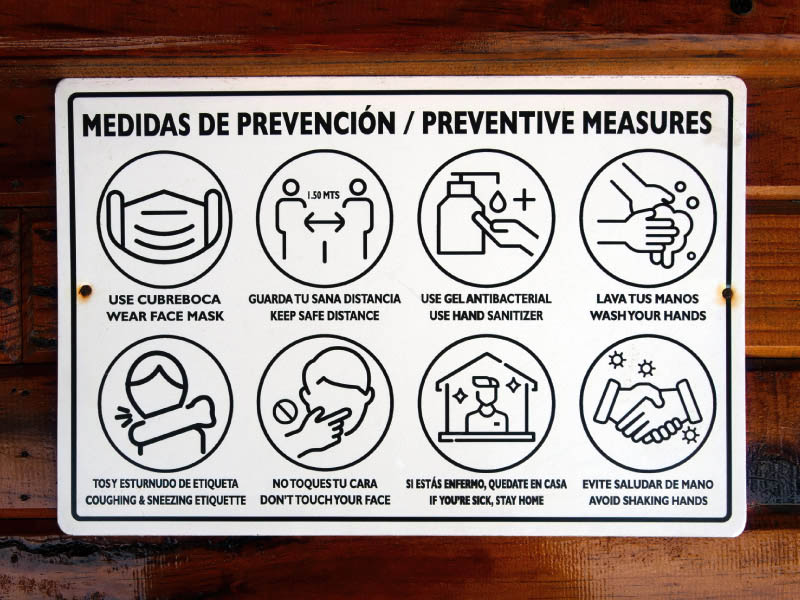Are monolingual Spanish speakers more at risk in the pandemic?
By Maria Elena Fernandez, American Heart Association News

The pandemic has highlighted societal inequities that leave historically disenfranchised communities more at risk for COVID-19 exposure. But recent studies suggest the disparities more severely impact Hispanic people who only speak Spanish, especially when it comes to unemployment and food insecurity.
"This is about structural racism and structural inequities," said Dr. Fatima Rodriguez, a cardiologist and assistant professor of cardiovascular medicine at Stanford University School of Medicine in California. "It has to do with the kind of jobs people do, the kind of communities people live in.
"Often the whole family, many generations, live together. It makes it very hard to isolate if you test positive. Whether it's food insecurity or homelessness, all those aspects of where you live have never been more important and when you have a weak public health infrastructure, you get all the downstream consequences of that."
Overall, Hispanic people continue to disproportionally require hospitalization or die at higher rates from the virus than white people. According to the latest Centers for Disease Control and Prevention data from Oct. 9, Hispanic people comprise 27% of COVID-19 cases in the U.S., even though they make up 18.5% of the total population. (Race and ethnicity data is available for 65% of the nation's cases.)
Isolation in the pandemic has led to loss of the usual support systems that would typically carry Hispanic workers through severe economic and food insecurity. Latino workers have faced the largest losses in employment, especially in the service industry. Others with jobs that can't be done remotely have had to soldier on and go to work despite the risk of exposure.
"People have been living on the edge," said Dr. Carlos Jose Rodriguez, director of cardiovascular epidemiology at Albert Einstein College of Medicine in New York City. He is not related to Fatima Rodriguez. "Many were living on the edge before the pandemic, but now you are talking about severe mental health crisis because people didn't have a way to support themselves, and if they had family members relying on them, it was very distressing.
"And as a cardiologist, I can tell you their risk factors are all out of control: diabetes, hypertension, heart failure. Everything is out of whack because they have not been able to take care of themselves properly. It just affected Latinos and a lot of disenfranchised Americans in many ways."
Language barriers can leave critical health information about how the coronavirus spreads or how to get tested or vaccinated inaccessible to people with limited or no English proficiency.
A 2020 study in Annals of Epidemiology examined how COVID-19 risks and deaths among Hispanic populations differ by region and are associated with employment rates, heart disease deaths, and less social distancing.
According to the study, cases of COVID-19 were greater in counties with large Hispanic populations in the Northeast and Midwest and in counties with more monolingual Spanish speakers. Deaths were greater in the Midwest counties.
While more than 65% of Hispanic people in the United States are native-born and English speakers, according to the U.S. Census Bureau, there are deeper disparities that Spanish-only speakers face. A census survey this past spring showed people who chose to answer the questions in Spanish reported two times the level of food insufficiency as Hispanic participants who responded in English.
"One of the most important factors of acculturation is language status, how you interact with the world, your health care system, even your health literacy," Fatima Rodriguez said. "Those whose main language is Spanish have not had the same access to information."
So, communities already at a disadvantage have less health literacy, "and it compounds the problem," said Carlos Jose Rodriguez. "There was an additive and multiplicative effect where you'd see disproportionate Black and Hispanic populations dying, or presenting to the hospital with severe COVID, because of the disparities they face, and it was really traumatic."
Medical experts agree that multi-level structural interventions are necessary to begin to address the inequities faced by Hispanic, Black and other populations during the pandemic. For Spanish-only speakers, health education and medical care must be provided in Spanish at appropriate literacy levels.
"Many of us hope that this is a signal for more attention, awareness and action to address these discrepancies," Carlos Jose Rodriguez said. "I think there's been a lot of communication to the fact that we will address many of these issues, but in reality I don't see that yet. I think the action is to press on and not let people forget how bad things were because if we do hit another pandemic or another crisis, it's only going to be worse."
If you have questions or comments about this story, please email [email protected].




